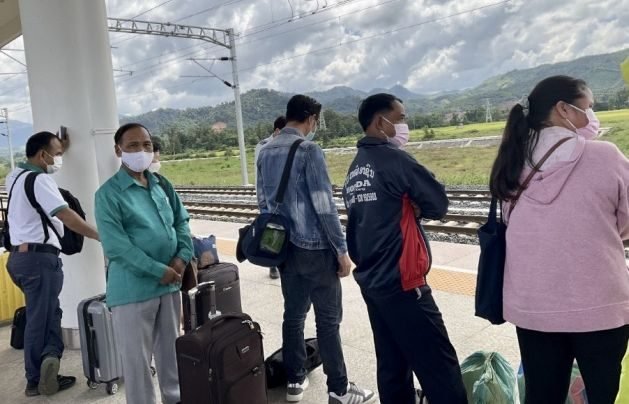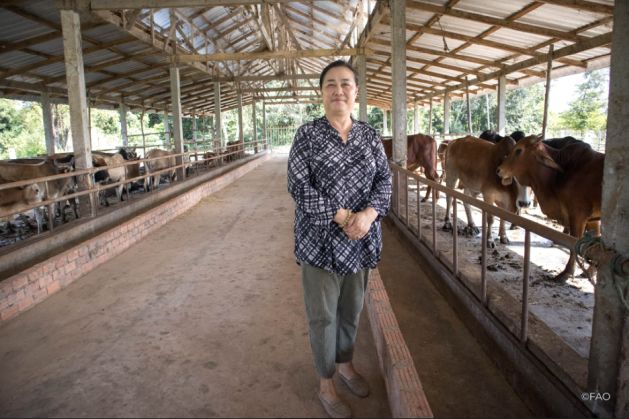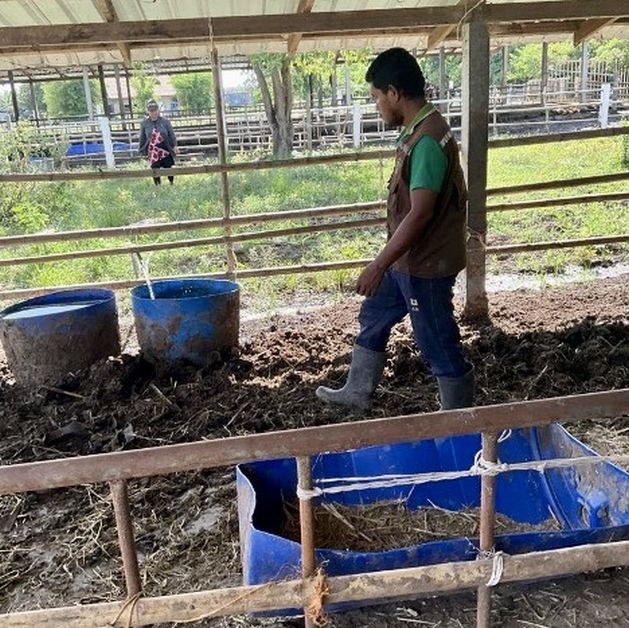
[ad_1]

VIENTIANE, Laos, Oct 18 (IPS) – Mountainous terrain in northern Laos has till now restricted probabilities for farmers and producers in a lot of the nation to export their items, limiting them primarily to subsistence farming and likewise curbing growth, training and poverty discount of their communities.
However as infrastructure and transportation within the “land of one million elephants” grows, the southeast Asian nation is shifting from landlocked to land-linked. The Laos-China Railway is probably the most notable of those transformations, making a high-speed technique of bringing individuals and merchandise by way of a number of the most distant provinces, notably within the north, and giving farmers entry to new markets to promote their items.
It is nonetheless too quickly to gauge the financial impression of the railway, which opened in December 2021, on close by communities. By means of the Hand in Hand Initiative (HiH), the United Nations Meals and Agriculture Group (FAO) goals to harness the potential of this clean slate to profit Laotian farmers by attracting buyers who will assist the event of a inexperienced financial hall alongside the monitor to sustainably empower the native communities that act as stewards of the land.
HiH is an evidence-based, country-owned and led initiative of the FAO to speed up agricultural transformation, with the aim of eradicating poverty, ending starvation and malnutrition, and lowering inequalities. The initiative was supporting 52 nations in Africa, Asia, Europe, Latin America, and the Center East as of Could 2022.
Small markets restrict manufacturing
Funding in Laos through the HIH has the ability to develop market choices for producers and likewise enhance their collective bargaining energy and incomes potential. At present many of those farmers yield small harvests not due to pure circumstances however due to the shortage of consumers, processers and exporters of their crops and livestock.
Dwelling in a fertile and comparatively massive nation with a small inhabitants, Laotian farmers are primed to maneuver “past feeding themselves, from subsistence farming to enterprise farming,” says FAO Nation Consultant Nasar Hayat. As a result of farmers are likely to plough their income into their households and communities, supporting their incomes potential instantly advantages communities, he added in an interview with IPS.
“When a farmer earns, they put that cash into houses, into their kids’s diet and training, into native companies. They don’t make a journey to Europe and drain the funds from their communities.”
With the intention to faucet into this incomes potential, Hayat says that Laotian farmers should work collectively and be supported by way of market accessibility, scientific coaching, and analysis and growth, all of which might be supported by buyers. These advances can pave the way in which for constructive long-term growth, he added.
Whereas the fertile southern and central plains of Laos have traditionally been seen because the nation’s breadbasket, the initiative goals to extend the capability of the mountainous north. In consequence, tea (which grows within the mountain forests) cassava (which might be cultivated on slopes) and livestock (which might be raised in any terrain) are the commodities included within the HiH.

Just one tea manufacturing unit
Within the misty, mountainous northern province of Oudomxay, within the village of Ban Phouhong (inhabitants 270), members of the Khmu ethnic group have been incomes their livelihoods by choosing tea in conventional methods for the final eight years. Plucking the leaves takes ability and dexterity and the leaves are probably extremely priceless, however pickers in Ban Phouhong have sadly seen their income restricted by a meagre market: just one manufacturing unit is accessible, giving its proprietor a de facto monopoly over the realm’s tea.
In consequence, the manufacturing unit proprietor has saved the costs he pays growers low, in no way consistent with inflation charges and the rising price of dwelling. Picked tea earns simply 15,000-20,000 Lao Kip per kilo (US$1.20), a price which has stayed regular whereas meals and gasoline costs have soared.
The restricted market additionally implies that solely two-thirds of the bushes’ priceless leaves are being picked, as a result of these older leaves are the one ones bought and processed by the close by manufacturing unit. In the meantime, the tea buds, which might be probably the most priceless a part of the plant, are left unpicked. Funding in Ban Phouhong might give pickers entry to their very own technique of processing these priceless buds.
Additionally, whereas the employees have been skilled in choosing, they lack the data essential to develop their very own enterprises: “We wish to plant extra seedlings, however we don’t know the way. Just one household is aware of plant seedlings, and so they haven’t been right here for years,” stated one picker. With funding, the villagers hope to get the scientific coaching they should take management of their very own rising potential.
Outdoors of the capital Vientiane, in Could Park Ngum, a gaggle of cassava farmers has been losing as much as 15 metric tonnes of cassava per day of harvest, amounting to about 100 metric tonnes of wasted cassava every year, due to the boundaries of their native cassava market.
The story of those farmers highlights how the potential advantages of Laos’ new connectivity aren’t restricted to rural, distant provinces. After one export intermediary did not pay the Could Park Ngum growers for his or her cassava – a debt amounting to about $1,200 per household – the farmers have been reticent to just accept something however money for his or her crops. In consequence, they’ve lowered their rising space by half and have additionally been stockpiling unsold cassava, a lot of which they’ve needed to throw away as a result of it has gone dangerous.

Growers flip to pesticides
Because of this loss, the farmers have sadly begun in search of much less environmentally-friendly methods of boosting their income, whilst they’re uncertain of who would purchase these crops. “We’ve been experimenting with pesticides on a small portion of our land. We discovered this might improve our yield from three metric tonnes of cassava per hectare per yr to 5 metric tonnes of cassava per hectare per yr,” stated one grower.
Nevertheless, with extra dependable consumers, the farmers might preserve their present natural rising strategies whereas doubling their rising potential, in flip doubling the earnings of their 50 hourly staff and, most significantly, guaranteeing their crops aren’t wasted.
Taking full benefit of the railway’s market-expanding energy is dependent upon following strict export laws. For livestock, export requires vaccination to forestall the unfold of transboundary illnesses. Whereas preliminary vaccination is dear, it pays for itself a number of occasions over by way of income.
The proprietor and operator of Nam Phu Vieng farm in Vientiane Province, Vanheung Duanglasy, says that the excessive price of vaccinating in opposition to lumpy pores and skin illness prevents her from promoting extra of her animals, even if she has the capability to lift way more. Whereas she has contacts with dependable consumers in Vietnam, vaccination prices about $45 per cow each three months, considerably limiting what number of cows she is ready to increase on the market.
Just like the cassava farmers, the proprietor of Nam Phu Vieng says that with funding and extra consumers her farm might produce way more, increasing her income and permitting her to rent extra staff from her local people.
© Inter Press Service (2022) — All Rights ReservedOriginal source: Inter Press Service
[ad_2]